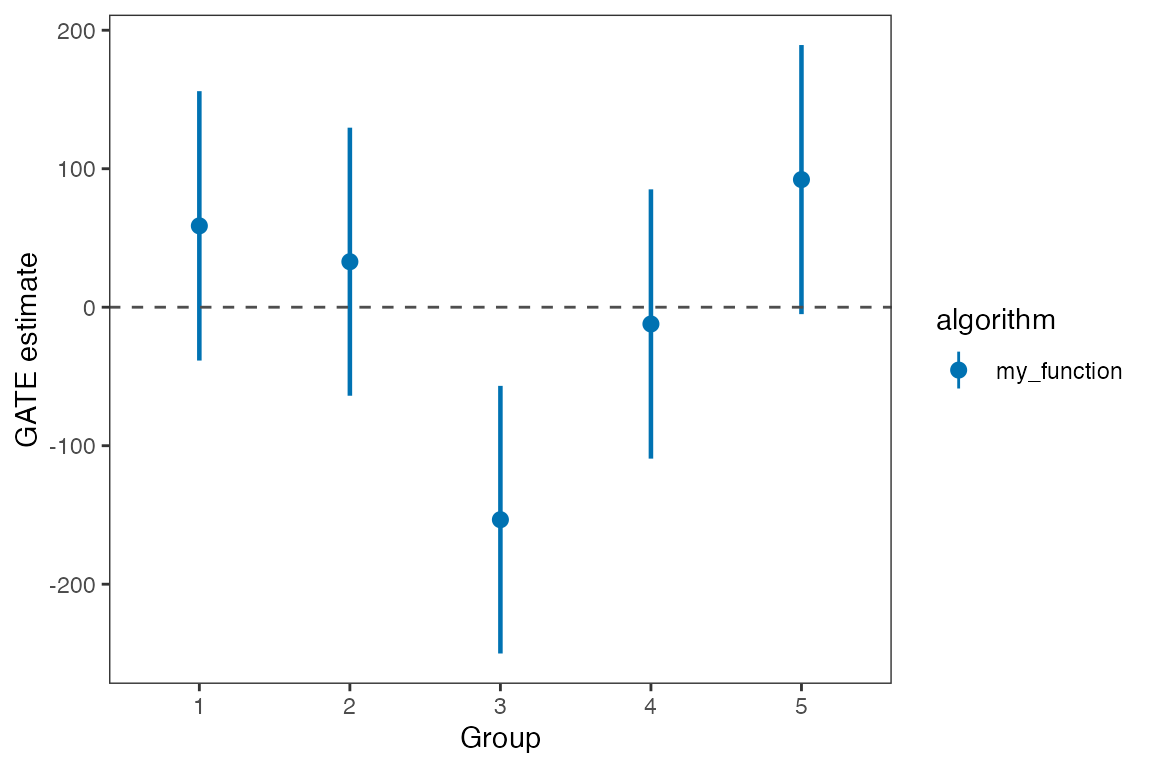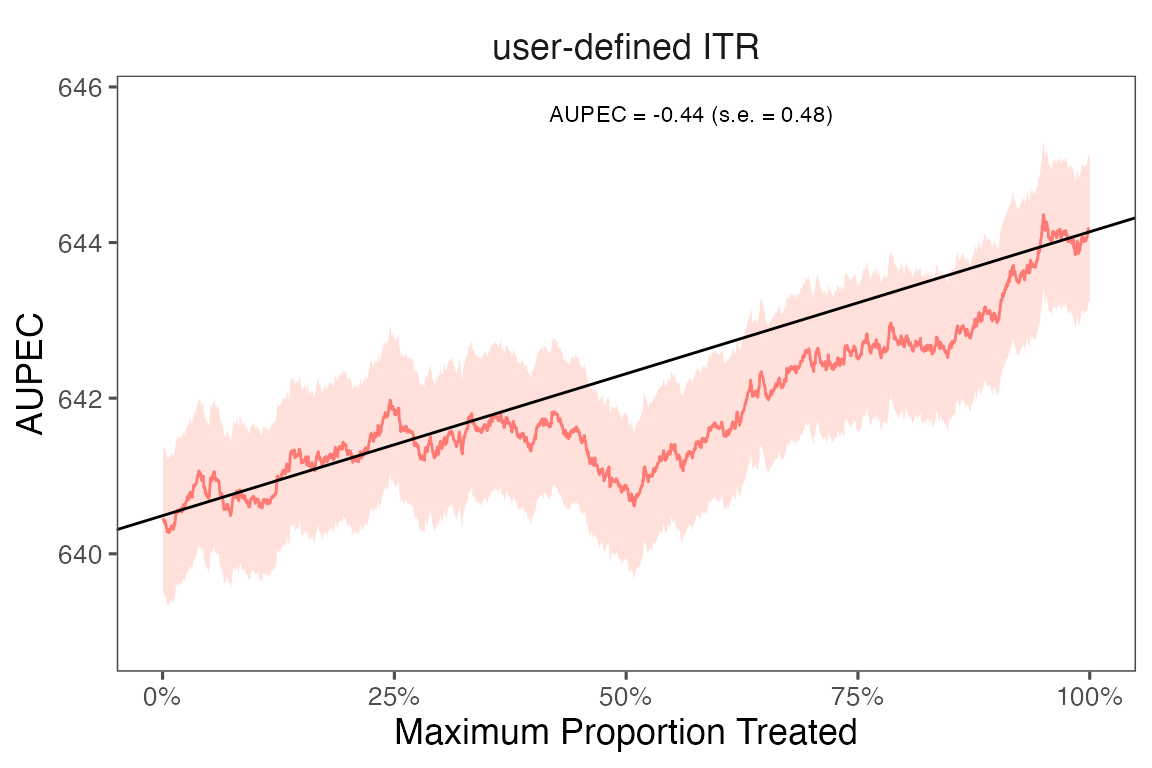Instead of using the ITRs estimated by evalITR models,
we can define our own ITR and evaluate its performance using the
evaluate_itr function. The function takes the following
arguments: itr_function a function defined by users that
returns a vector of 0 and 1, data a data frame,
treatment a character string specifying the treatment
variable, outcome a character string specifying the outcome
variable, budget a numeric value specifying the maximum
percentage of population that can be treated under the budget
constraint., and tau a numeric vector specifying the
unit-level continuous score for treatment assignment. We assume those
that have tau<0 should not have treatment. Conditional Average
Treatment Effect is one possible measure.. The function returns an
object that contains the estimated GATE, ATE, and AUPEC for the user
defined ITR.
# user's own ITR
my_function <- function(data){
itr <- (data$race == 1)*1
return(itr)
}
# evalutate ITR
user_itr <- evaluate_itr(
itr_function = "my_function",
data = star_data,
treatment = treatment,
outcome = outcomes,
budget = 0.2,
tau = seq(0.1, 0.9, length.out = nrow(star_data)))
# summarize estimates
summary(user_itr)
#> ── PAPE ────────────────────────────────────────────────────────────────────────
#> estimate std.deviation algorithm statistic p.value
#> 1 -0.43 0.69 my_function -0.62 0.53
#>
#> ── PAPEp ───────────────────────────────────────────────────────────────────────
#> estimate std.deviation algorithm statistic p.value
#> 1 0.11 0.64 my_function 0.17 0.87
#>
#> ── PAPDp ───────────────────────────────────────────────────────────────────────
#> data frame with 0 columns and 0 rows
#>
#> ── AUPEC ───────────────────────────────────────────────────────────────────────
#> estimate std.deviation statistic p.value
#> 1 -0.44 0.48 -0.92 0.36
#>
#> ── GATE ────────────────────────────────────────────────────────────────────────
#> estimate std.deviation algorithm group statistic p.value upper lower
#> 1 59 59 my_function 1 0.99 0.320 -39 156
#> 2 33 59 my_function 2 0.56 0.577 -64 130
#> 3 -153 59 my_function 3 -2.61 0.009 -250 -57
#> 4 -12 59 my_function 4 -0.20 0.838 -109 85
#> 5 92 59 my_function 5 1.56 0.119 -5 189We can extract estimates from the est object. The
following code shows how to extract the GATE estimates for the writing
score with the causal forest algorithm.
# plot GATE estimates
library(ggplot2)
summary(user_itr)$GATE %>%
mutate(group = forcats::as_factor(group)) %>%
ggplot(., aes(
x = group, y = estimate,
ymin = lower , ymax = upper, color = algorithm)) +
ggdist::geom_pointinterval(
width = 0.5,
position = position_dodge(0.5),
interval_size_range = c(0.8, 1.5),
fatten_point = 2.5) +
theme_bw() +
theme(panel.grid = element_blank(),
panel.background = element_blank()) +
labs(x = "Group", y = "GATE estimate") +
geom_hline(yintercept = 0, linetype = "dashed", color = "#4e4e4e") +
scale_color_manual(values = c("#0072B2", "#E69F00", "#56B4E9", "#009E73", "#076f00"))
We plot the estimated Area Under the Prescriptive Effect Curve (AUPEC) for the writing score across a range of budget constraints for user defined ITR.
# plot the AUPEC
plot(user_itr)